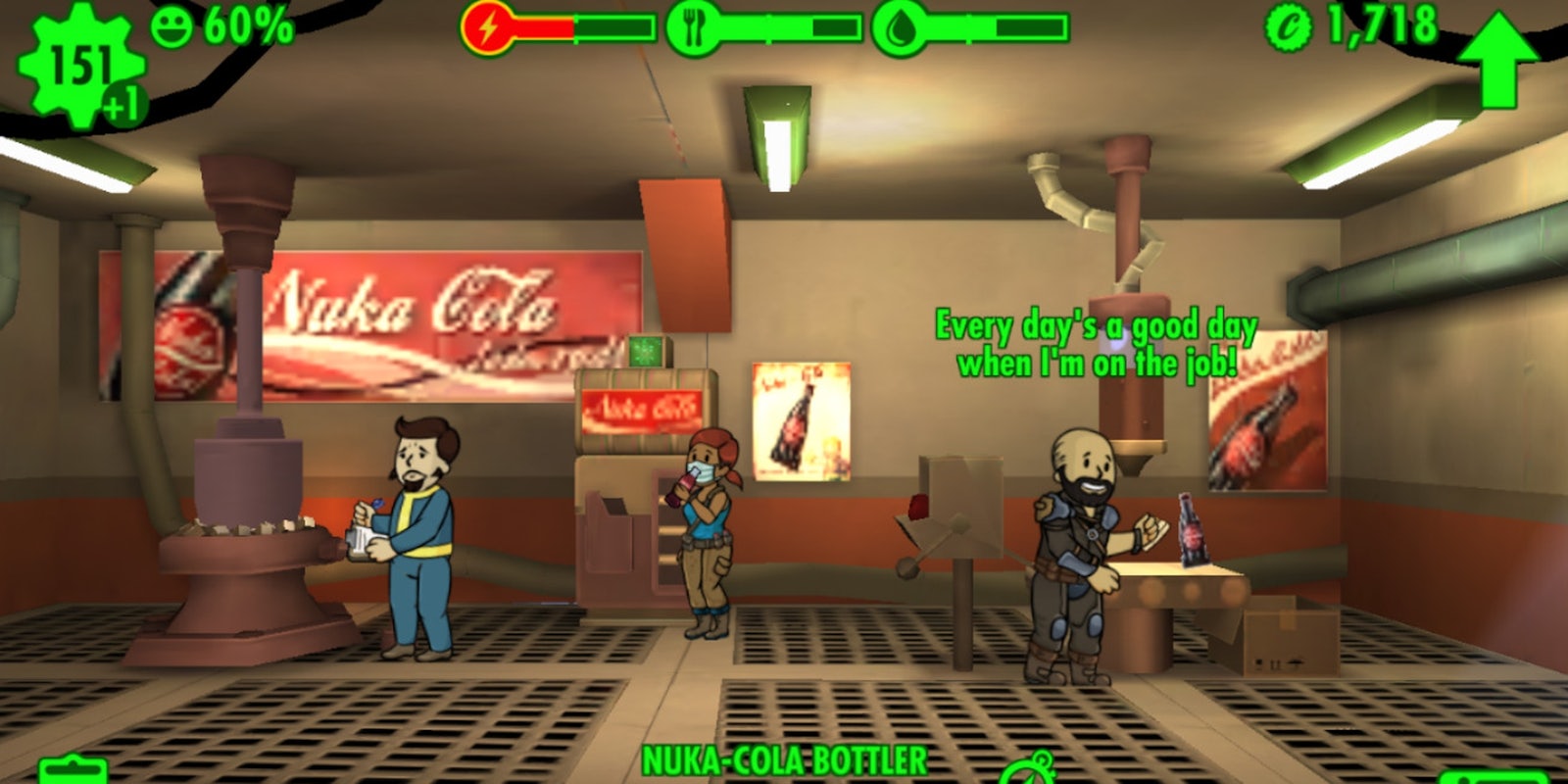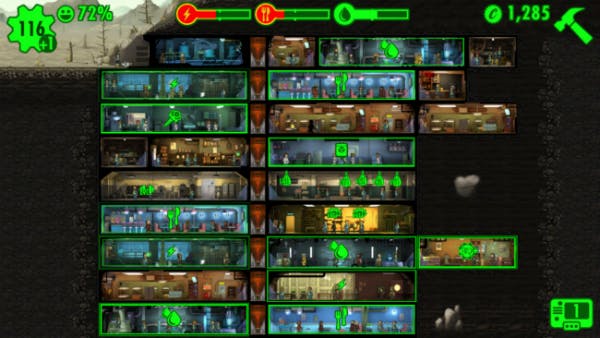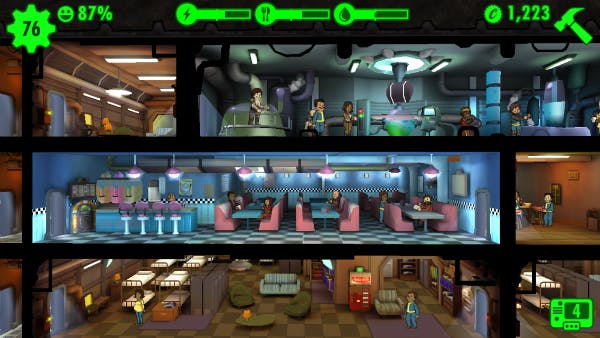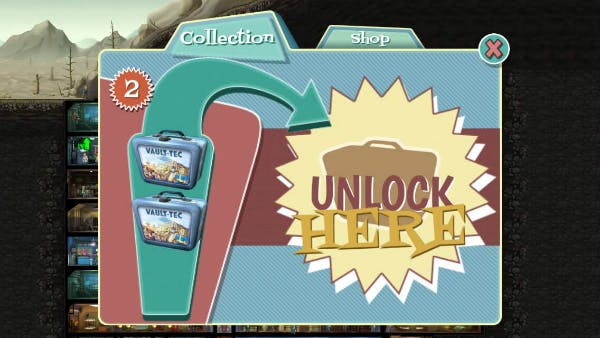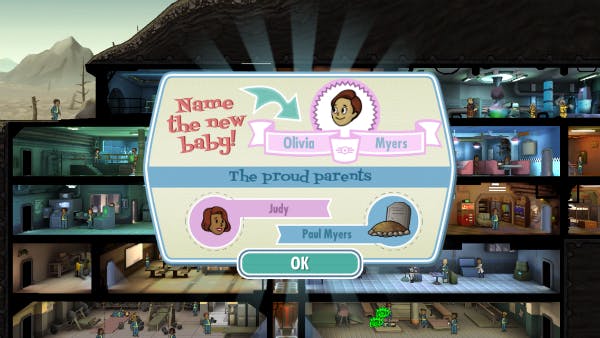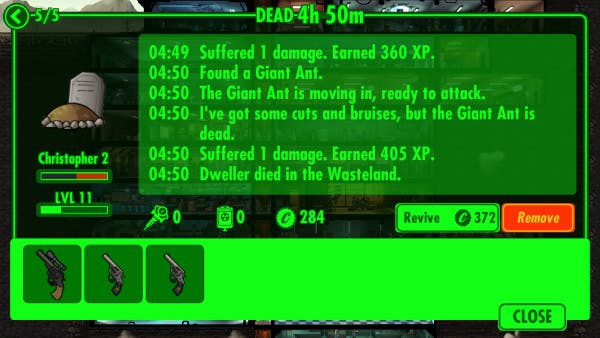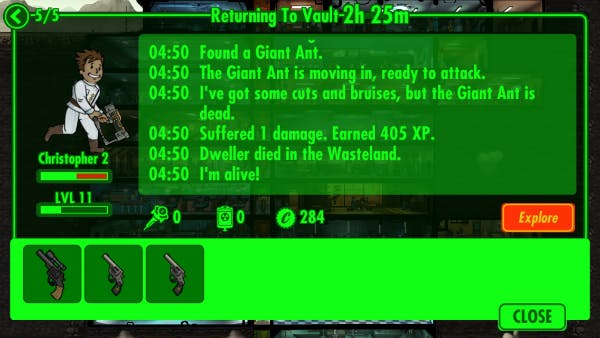A Vault Overseer has no time to be a nice person—and you might not either when you take control of a post-nuclear apocalypse survival shelter.
Fallout Shelter was a surprise announcement at Bethesda’s E3 press conference last month. It’s a free-to-play resource-management game on iOS that draws inspiration from Tiny Tower and FTL. Vault dwellers are your most valuable resource. Knowing how to leverage dwellers by pressing them into service where they can do the most good is the key to success.
The game is laid out as a cross-section of a Vault. The primary currency is caps (of course), and you spend it on rooms that produce resources like power, food, and energy. Each dweller has stats presented in the classic Fallout S.P.E.C.I.A.L. format—strength, perception, endurance, etc.—and each type of room calls for a specific stat for dwellers to perform at top efficiency. Dwellers with high strength are the best workers for power plants, and dwellers with high agility are best placed in diners, for example.
The best way to accrue new dwellers is to encourage them to make babies, by placing characters with high Charisma together in a barracks. Match up an appropriate pair and they sneak off for a few seconds. A pregnant dweller emerges shortly thereafter.
The larger your Vault population, the more advanced rooms you can unlock for construction, like training areas to raise dweller stats, and labs to make stimpacks and Rad Away. Radiation poisoning decreases a dweller’s total health, and without a steady supply of water your dwellers start getting radioactive, fast.
Bethesda Softworks has expertly woven the Fallout IP into Fallout Shelter. Every dweller is modeled after Vault Boy, the smiling, thumbs-up raising corporate icon of Vault-Tec. Dwellers you send out to explore the wasteland bring back caps, outfits, and weapons you’ll recognize from Fallout 3 and Fallout: New Vegas.
Diners, power plants, and living quarters in Fallout Shelter look like the matching rooms you find in Vaults in Fallout 3 and New Vegas. The fanfares that announce your accomplishments are blared out in 1950s jazz style. Fallout Shelter delivers in a huge way on the fan service front.
If you’re willing to spend some real-life money you can buy lunchboxes—an inside Fallout joke—that include four random cards. Each card grants resources, outfits, guns, or named Vault dwellers with high stats and good equipment who wander out of the wasteland and become a new Vault citizen.
You can also earn lunchboxes by completing objectives, but the hope is that you’ll drop a buck or $5 or $20 on them. I wanted to make sure I could win Fallout Shelter without doing so, by way of testing whether or not Fallout Shelter was merely a cash grab, so I only took the free lunchboxes I could earn and spent them only when the situation was dire.
Playing the game strictly as a free experience was not easy. After failing multiple times I finally got the formula right and built a growing, healthy Vault. The formula was keeping women constantly pregnant. On the one hand, the Fallout world is post-apocalyptic, and human numbers are decimated. Having more children would be a key component of any plan to rebuild society.
On the other hand, treating women like breeding stock was uncomfortable. Plus, the game makes pregnant women useless in the face of any sort of disaster, like a room being on fire or a Radroach invasion. All the pregnant women in the room will throw up their hands, scream, and run around wildly, decreasing the number of dwellers who can try to clean up the mess.
I think this comes down to the lesser of evils. Which is more offensive, the uselessness of pregnant dwellers, or allowing them to die in fires? Forcing them to remain in maternity wards for their own safety also seems like the wrong answer.
Losing dwellers to Vault disasters or the dangers of the wasteland is meaningless unless you are extremely cap poor, because anyone can be revived. The lack of danger took away from the sense of challenge.
I got tired of endlessly tapping the screen to collect my resources, and wished for some sort of automatic resource collection. If I took a day or two away from the game all my dwellers might be irradiated and almost dead when I loaded the game up again, no matter how well I’d built up the Vault’s infrastructure.
I understand that the endless tapping is the addictive aspect of Fallout Shelter, hooking players into waiting for that next green icon to float over a room, begging to be tapped and collected, but once I reached 200 dwellers and resources were no longer an issue, the fun would have been training dwellers and arming them to see how long they could last in the wasteland.
The larger my Vault became, the more difficult it was to select individual dwellers and hold-and-drag them into the appropriate room. I had to zoom all the way in to a room to grab a dweller, and would lose them on the way to the room I was trying to put them in. Fallout Shelter also incessantly crashed once I reached maximum population.
The game was effectively over anyway once I reached 200 dwellers, and Fallout Shelter in the grand scheme of things may be nothing more than an advertisement for Fallout 4. Characters and weapons from previous Fallout games are now making their appearance in Fallout Shelter. Consider it a template for how triple-A developers can leverage their IP into games that take advantage of mobile gaming design, built around short play sessions, as a tie-in to their big budget counterparts on consoles and PCs.
Screengrab via Fallout Shelter

